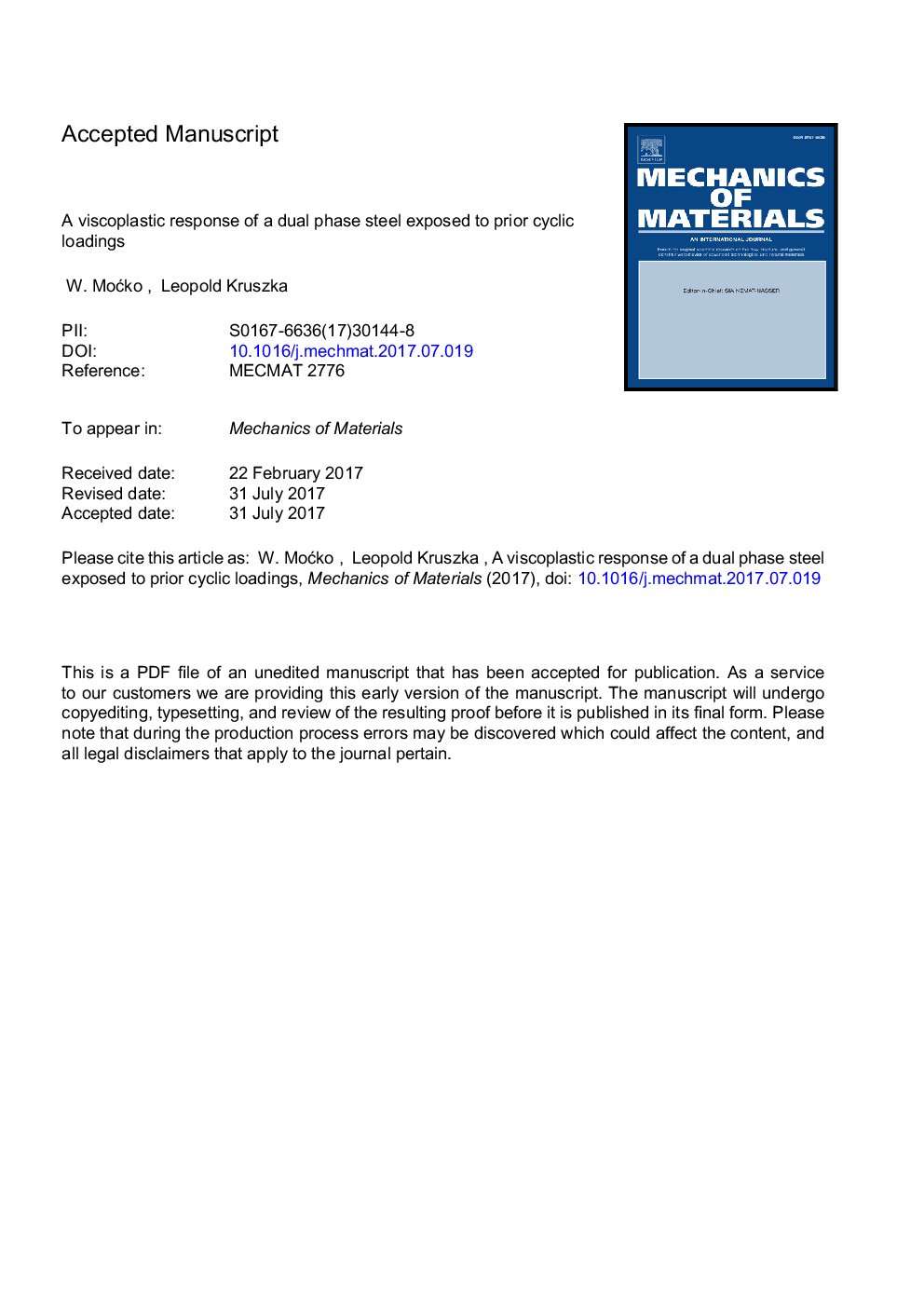| Article ID | Journal | Published Year | Pages | File Type |
|---|---|---|---|---|
| 5018412 | Mechanics of Materials | 2017 | 30 Pages |
Abstract
This paper presents an analysis of the influence of microstructural evolution due to fatigue loadings on the tensile behavior of a DP 500 dual phase steel. Firstly, the material was exposed to cyclic loadings at a number of cycles less than fatigue life. Subsequently, tensile characteristics of pre-fatigued specimens were determined at a wide range of strain rates. A testing machine and Kolsky bar were employed under quasi-static and dynamic deformation regimes, respectively. The results were used to develop a new constitutive model, based on a previous relation introduced by authors to describe mechanical behavior of pre-fatigued materials under quasi-static loading conditions. Original equation was modified by a new damage parameter, modification of the term corresponding to damage development and the addition of the strain rate sensitivity term. The new constitutive model takes into account the number of fatigue cycles and the maximum stress amplitude. Good agreement between experimental data and model predictions was obtained under both quasi-static and dynamic loading conditions. It was also found that lower cyclic stress (400â¯MPa) has no influence on the strain rate sensitivity. Higher cyclic stresses (450â¯MPa and 500â¯MPa) induce decrease of the rate sensitivity decreases with an increase of maximum pre-fatigue stress.
Related Topics
Physical Sciences and Engineering
Engineering
Mechanical Engineering
Authors
W. MoÄko, Leopold Kruszka,
